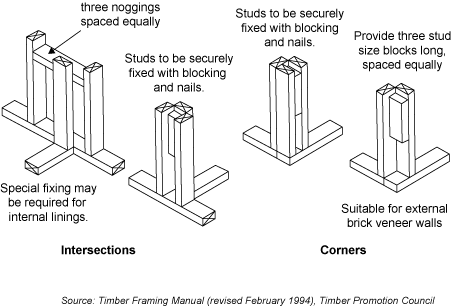Common studs
Common studs are vertical members which transfer loads vertically to bottom plates.
They are usually evenly spaced to suit loads, lining and cladding fixing. Spacings are generally 450 or 600 mm, depending on the roof cladding. Roof tiles require studs at 450 mm spacing. Metal roofing may require studs at 600 mm.
Common studs should be reinforced at points of concentrated loads. This is done by nail laminating additional studs together.
All junctions must have sufficient studs. They must be located so as to allow linings to be fixed.

